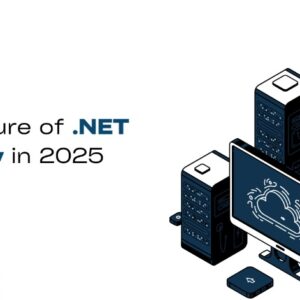
We’re in the digital age—of course there’s going to be digital financing sooner or later! Nowadays, we can send money to anyone anywhere in the world, earn money online, and invest in digital currency. On top of all of this, we can even see crypto in emerging markets.
Digital money has truly revolutionized the way we do financial transactions and has ingrained itself into our daily lives. One of the major advantages it has brought to society is how it has improved financial inclusion, especially for people who were previously shut out of the traditional financial system.

What Is Financial Inclusion?
Financial inclusion refers to the ability of businesses and individuals to access and use appropriate financial services, such as borrowing, saving, and payment and money transfer services.
Not so long ago, only people who resided in urban areas, had adequate income, assets, and an official address had access to financial services. Digital currency, however, has changed that.
What Are The Ways Digital Money Is Improving Financial Inclusion?
Currently, there are more than 80 countries in the world that have digital financial services, including digital money. As a result, millions of previously excluded and underserved low-income customers are switching from only using cash for their transactions to using mobile phones or other digital technologies to access formal financial services.
And as more and more technologies come into the picture, the situation is changing drastically—and positively.
Here are some ways digital financial services and digital money are improving financial inclusion:
1. Increased Access To Financial Services
Access to financial services has substantially grown thanks to the advent of digital money, especially for those who live in remote and rural locations. With digital money, people and companies can access services without having to go to a bank or other financial institution.
Instead, they can do transactions using a cell phone or other digital device. People in rural locations can now access financial services for the first time, which has improved their capacity to manage, invest, and save money.
2. Lower Barriers To Entry
Traditional financial services may offer significant entry barriers, such as strict qualifying requirements, documentation requirements, and expensive fees.
On the other hand, digital money has lower barriers to entry and is available to a wider spectrum of people, including those who have low incomes and don’t have official identification.
This improves the financial security and stability of those who previously lacked access to financial services by enabling them to engage in the financial system.
3. Enhanced Efficiency
Compared to traditional financial transactions, digital money transactions are faster and more effective. This lessens the time and effort needed to manage one’s finances by enabling quick and easy access to and use of financial services.
Small businesses and individuals who frequently transact money stand to gain the most from this because it saves them both time and money.
4. Better Security
Transactions using digital currency are frequently safe and encrypted, which reduces the risk of fraud and other financial crimes. Users benefit from this in terms of peace of mind and asset protection for their money.
5. Enhanced Financial Literacy
By giving people access to real-time financial data, digital money can also help enhance financial literacy.
For instance, digital wallets give customers a thorough snapshot of their spending patterns, enabling them to better understand their finances and decide how much to spend and save.
6. More Inclusive Financial Products
Digital money has also opened up new opportunities for financial innovation, including the development of more inclusive financial products. For instance, mobile-based microfinance services give people access to small loans, even in remote areas, improving their capacity to start and grow small businesses.
Digital money has also enabled the creation of peer-to-peer payment systems, which make it possible for people to transfer and receive money directly from one another without the need for a traditional financial institution.
With The Presence Of Digital Money, Are There Still Challenges To Financial Inclusion?
Although digital money continues to provide many advantages to individuals and businesses, there are still challenges to financial inclusion that must be overcome.
For instance, it is challenging for many people in developing countries to engage in the digital economy because they lack access to computers, mobile phones, and other digital devices as well as the internet.
Additionally, there is a risk of digital financial exclusion for those who are unable or unwilling to use digital money, such as older individuals and those who lack digital literacy.
It is crucial to address these challenges and promote digital financial literacy and access in order to guarantee that digital money continues to enhance financial inclusion. Governments, financial institutions, and tech companies can work together to implement a variety of policies, initiatives, and joint ventures to achieve this.
By uniting, we can make sure that everyone, regardless of location, income level, or background, continues to have better access to financial services.
Digital Money Is The Future Of Financial Inclusion
Digital money is already changing the financial landscape. It already has a significant impact on financial inclusion as more people can now access and use financial services.
With continued innovation and investment, digital money has the potential to significantly advance financial inclusion and offer a more open and secure financial system for all individuals and businesses around the world.
For more insightful articles about tech, check out Readree!
Author Profile
- I am the owner of the blog readree.com. My love for technology began at a young age, and I have been exploring every nook and cranny of it for the past eight years. In that time, I have learned an immense amount about the internet world, technology, Smartphones, Computers, Funny Tricks, and how to use the internet to solve common problems faced by people in their day-to-day lives. Through this blog, I aim to share all that I have learned with my readers so that they can benefit from it too. Connect with me : Sabinbaniya2002@gmail.com
Latest entries
 Digital MarketingJuly 13, 2025The Future of .NET Security: Key Trends to Watch in 2025
Digital MarketingJuly 13, 2025The Future of .NET Security: Key Trends to Watch in 2025 BlogJuly 12, 2025Top 10 AI Video Generator Tools to Watch in 2025
BlogJuly 12, 2025Top 10 AI Video Generator Tools to Watch in 2025 Artificial IntelligenceJuly 11, 2025Why AgentForce Is the Right Choice for Generative AI Development
Artificial IntelligenceJuly 11, 2025Why AgentForce Is the Right Choice for Generative AI Development Artificial IntelligenceJuly 10, 2025The Role of AI in Shaping Full-Stack Product Development in 2025
Artificial IntelligenceJuly 10, 2025The Role of AI in Shaping Full-Stack Product Development in 2025